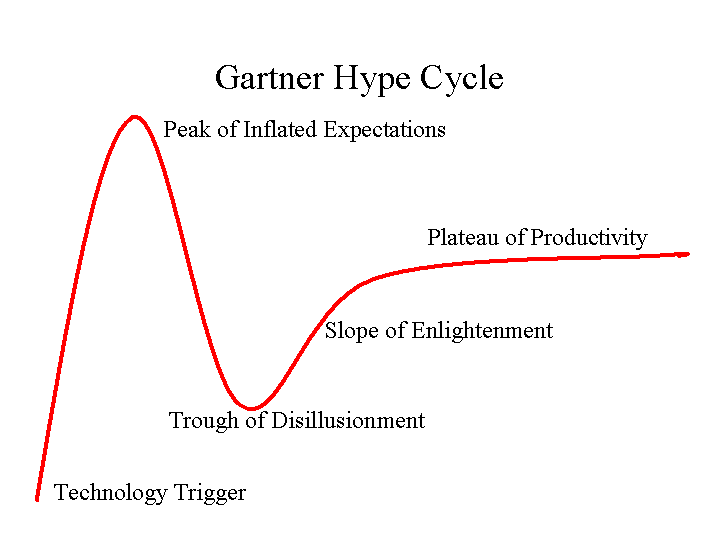
In 1995 the Gartner Group created and promoted a graph that they called the Hype Cycle. It describes the boom-and-bust cycle of media coverage and popular attention to a new technology. Once the seeds of a new technology become available, companies begin working on new products that exploit it. If the technology is sexy enough, the media covers it so aggressively that expectations far exceed what can be delivered in the near-term. At some point the real products fail to meet the expectations that were generated by the media, the media and the mass audiences tag it as a failure or disappointment, and wander off to pump up some other technology. However, industry continues to work with the technology and turn it into a product. A few years later the technology delivers successful products that everyone is interested in and customers wonder why it took so long. This Hype Cycle curve has been applied to many technologies and you can see some of these in the links below.
Over the last 2 years the media and our own community have gotten very excited about the promise of serious games. During 2007, the media was particularly enamored with Second Life. There was a point at which Second Life was appearing in the mainstream business press every single week (competing for attention with Facebook). Perhaps, we have gone over the peak of attention and expectation in serious games. We may be entering a period in which many people lose interest in the subject and it is no longer seen as the next revolution in simulation. But even as the media attention wanders away, there will be developers who continue to work in this area. If the hype cycle idea holds true for serious games, then in a couple of years we should see some successful products emerge and the media recognize that the industry is finally catching up with the hype that was generated in 2005-2007.
I have discussed this idea with reps from 2 different companies that develop tools for both the gaming and the military communities. One vendor believes there is no near-term growth opportunity in serious games and are ignoring it, the other vendor believes there is a good growth curve here but the market has to get past the fractured fiefdoms and love of legacy products before it can take off (beginning in 2008 or 2009 in her opinion).
Labels: gartner, hype cycle, new technology, serious games
